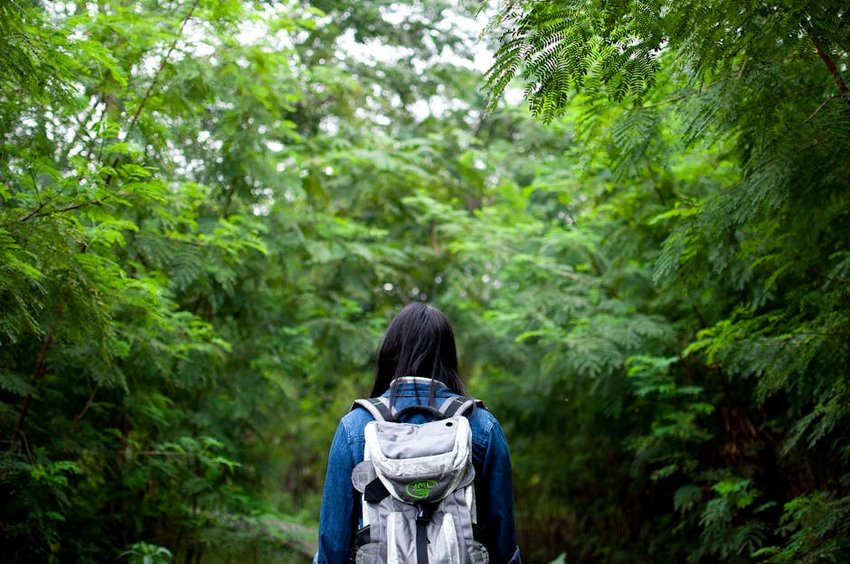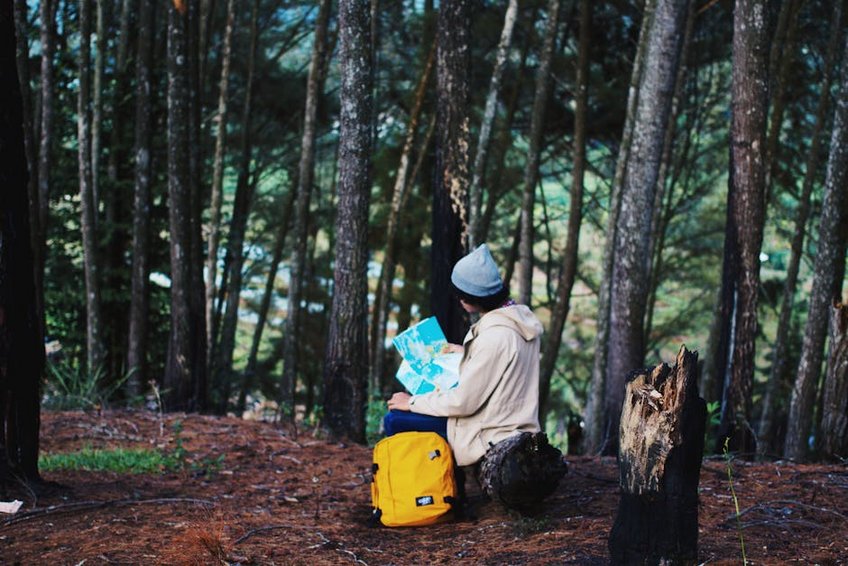Backpacker Routes in Southeast Asia: Your Ultimate Adventure Guide
Embarking on backpacker routes in Southeast Asia is like stepping into a living, breathing travel documentary where ancient temples, turquoise waters, vibrant markets, and welcoming cultures create the ultimate adventure canvas. This region offers some of the world’s most rewarding and budget-friendly travel experiences, with well-established routes that have become rites of passage for generations of wanderers. Whether you’re drawn to Thailand’s full moon parties, Vietnam’s motorbike trails, or Indonesia’s spiritual retreats, Southeast Asia delivers an unforgettable journey that balances affordability with profound cultural immersion. The beauty of these backpacker routes lies in their perfect blend of accessibility and authenticity, where you can sip fresh coconut water on pristine beaches for $2 one day and hike through misty mountains surrounded by hill tribes the next. Your Southeast Asian backpacking adventure awaits, promising stories you’ll tell for a lifetime and connections that transcend borders.
Backpacker Routes in Southeast Asia – Essential Information
Understanding the fundamentals of Southeast Asian travel will transform your backpacking experience from stressful to sensational. This region encompasses eleven countries, though most backpacker routes focus on the well-trodden yet magnificent trail through Thailand, Laos, Vietnam, Cambodia, and Indonesia, with Malaysia, Myanmar, and the Philippines offering equally rewarding alternatives. The climate varies dramatically across seasons and regions, meaning your packing list might include both rain gear and beachwear. What makes these backpacker routes particularly special is the infrastructure built around travelers’ needs—from affordable hostels and convenient bus networks to street food stalls serving delicious meals for less than $3. You’ll find that English is widely spoken in tourist areas, ATMs are plentiful, and visa arrangements are generally straightforward for Western passport holders, though requirements vary by nationality.
Southeast Asia Backpacking – What You Need to Know
- Visa requirements range from visa-free entry to e-visas or visa-on-arrival for most Western passport holders, with typical stays of 30-90 days depending on the country
- The best time to visit varies by region, but generally November-February offers cooler, drier weather ideal for exploring
- Budget between $25-50 per day for comfortable backpacking, including accommodation, food, transportation, and activities
- Budget backpacker: $25-35/day – dorm beds, street food, local buses, limited paid activities
- Comfortable backpacker: $35-50/day – private rooms, restaurant meals, some guided tours, more transportation options
- Flashpacker: $50-75/day – boutique hostels, nicer restaurants, frequent tours, domestic flights between destinations
- Tourism Authority of Thailand Official Site
- Lonely Planet Southeast Asia Travel Guide
- ASEAN Tourism Official Website
Key Documentation and Health Preparations
Before hitting these legendary backpacker routes, ensure your passport has at least six months validity and plenty of blank pages. While many countries offer visa-free entry, some require advance planning—Vietnam often needs an e-visa, Myanmar may require pre-approval, and Thailand sometimes requests proof of onward travel. Vaccinations for Hepatitis A and B, typhoid, and tetanus are recommended, and malaria prophylaxis might be necessary for rural areas. Travel insurance is non-negotiable; choose a policy that covers adventure activities like scuba diving or motorbiking if you plan to indulge. Digital copies of important documents stored in cloud storage provide peace of mind if physical copies go missing during your travels.

Backpacker Routes in Southeast Asia – Planning Your Journey
Crafting your ideal Southeast Asian adventure requires balancing ambition with realism—these countries may look small on maps, but travel times can be surprisingly long due to mountainous terrain, border crossings, and the leisurely pace of local transportation. Most backpacker routes follow logical geographical progressions, whether you’re traveling north to south through Vietnam or island-hopping through Thailand’s Andaman Sea. The classic route typically begins in Bangkok, moves north to Chiang Mai, crosses into Laos, continues to Vietnam, dips down to Cambodia, and concludes with beach time in southern Thailand or Indonesian islands. Smart planning means allocating 2-3 months for a comprehensive journey or focusing on 2-3 countries for a 4-6 week trip. Remember that some of the best experiences come from unplanned detours, so build flexibility into your itinerary.
Best Time to Explore Backpacker Routes
The ideal timing for Southeast Asian backpacker routes depends on your tolerance for heat, rain, and crowds. November through February offers the most comfortable conditions with cooler temperatures and minimal rainfall—perfect for temple-hopping and trekking—but also attracts the highest number of travelers. March to May brings intense heat, especially in inland cities, while June to October constitutes monsoon season with daily downpours that can disrupt transportation but also create lush landscapes and fewer tourists. Regional variations matter tremendously; when it’s raining on Thailand’s west coast, the east coast might be sunny, and while northern Vietnam shivers in December, southern Thailand enjoys perfect beach weather. Shoulder seasons (March-April and September-October) often provide the best balance of decent weather and manageable crowds.
Budget Planning and Daily Costs
Essential Packing Checklist
Packing light is the golden rule for Southeast Asian backpacker routes, where you’ll constantly be moving between locations and navigating various climates. Essentials include quick-dry clothing, a reliable rain jacket, sturdy sandals, swimwear, a first-aid kit, and photocopies of important documents. Technology-wise, a universal power adapter, power bank, and unlocked smartphone will prove invaluable for navigation and communication. Don’t forget mosquito repellent with DEET, sunscreen (often expensive locally), and a refillable water bottle with purification tablets or filter to reduce plastic waste. Leave space in your pack for market finds and remember that anything forgotten can usually be purchased affordably along the way.
Backpacker Routes in Southeast Asia – Top Itineraries and Experiences
The beauty of Southeast Asian backpacker routes lies in their diversity—whether you seek spiritual enlightenment, beach paradise, culinary adventures, or cultural immersion, there’s a path perfectly suited to your interests. The classic “Banana Pancake Trail” winds through Thailand, Laos, Vietnam, and Cambodia, offering temple complexes, bustling cities, and natural wonders. Alternatively, the Indonesian archipelago route takes you through Bali, Lombok, Flores, and beyond, focusing on volcanic landscapes and world-class diving. Malaysia combines modern cities with pristine rainforests, while the Philippines offers over 7,000 islands to explore. Each route presents unique opportunities: learning to cook local dishes in Chiang Mai, cruising Ha Long Bay, exploring Angkor Wat at sunrise, or discovering hidden waterfalls in Laos. The journey becomes as meaningful as the destinations themselves.
Must-See Highlights Along the Routes
Certain experiences define Southeast Asian backpacker routes and deserve priority in your planning. Angkor Wat’s temple complex in Cambodia represents one of humanity’s architectural marvels, best explored over three days to appreciate its scale. Thailand’s Full Moon Party on Koh Pha Ngan offers legendary nightlife, while its northern capital Chiang Mai provides cooking classes, ethical elephant encounters, and stunning mountain scenery. Vietnam’s Ha Long Bay cruise and motorbike loop through Ha Giang deliver unforgettable landscapes, and Indonesia’s Mount Bromo sunrise hike rewards early risers with otherworldly views. Laos’ Kuang Si Falls and Vang Viende rock climbing, Malaysia’s Cameron Highlands tea plantations, and the Philippines’ underground river in Palawan all deserve consideration when crafting your ideal route.
Hidden Gems and Local Favorites
Beyond the well-trodden path, Southeast Asia conceals countless treasures that separate memorable journeys from ordinary trips. In Vietnam, consider the Ha Giang Loop motorbike route near the Chinese border, where karst mountains dwarf even Ha Long Bay’s formations. Laos’ 4,000 Islands (Si Phan Don) in the Mekong River offer hammock-based relaxation rarely found elsewhere. Indonesia’s Nusa Islands provide Bali’s beauty without the crowds, while Malaysia’s Perhentian Islands deliver some of the region’s best snorkeling right from the beach. Cambodia’s Kampot pepper plantations and abandoned Bokor Hill Station offer fascinating glimpses into history, and Thailand’s Pai valley remains a hippie paradise despite growing popularity. These lesser-known spots often provide the most authentic cultural exchanges and memorable experiences.
Backpacker Routes in Southeast Asia – Practical Travel Information
Navigating Southeast Asia’s transportation network is an adventure in itself, offering everything from overnight trains to rickety local buses and speedboats between islands. Understanding your options helps maximize time and minimize frustration. For long distances, overnight buses and trains save on accommodation costs, while budget airlines like AirAsia offer surprisingly affordable flights between major hubs. Within cities, Grab (Southeast Asia’s Uber) provides convenient and transparent pricing, while tuk-tuks and motorbike taxis offer authentic local experiences. Accommodation ranges from $5 dorm beds to $25 private rooms, with booking apps like Booking.com and Hostelworld simplifying the process. Food represents both a cultural experience and budget-saver, with incredible street food available for $1-3 per meal and convenience stores stocking familiar snacks when you need a taste of home.
| Transportation Type | Typical Journey | Price Range (USD) |
|---|---|---|
| Overnight Bus | Bangkok to Chiang Mai (10 hours) | $15-25 |
| Local Train | Hanoi to Da Nang (15 hours) | $20-35 |
| Budget Flight | Kuala Lumpur to Bali (3 hours) | $40-80 |
| Ferry/Speedboat | Phi Phi to Phuket (2 hours) | $15-30 |
| Motorbike Rental | Per day with insurance | $5-10 |


